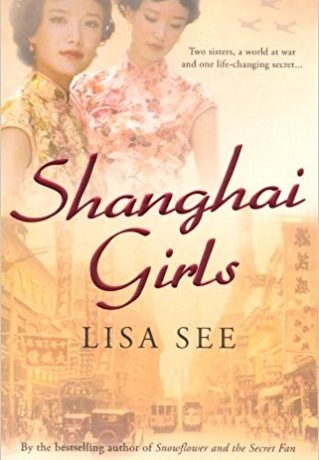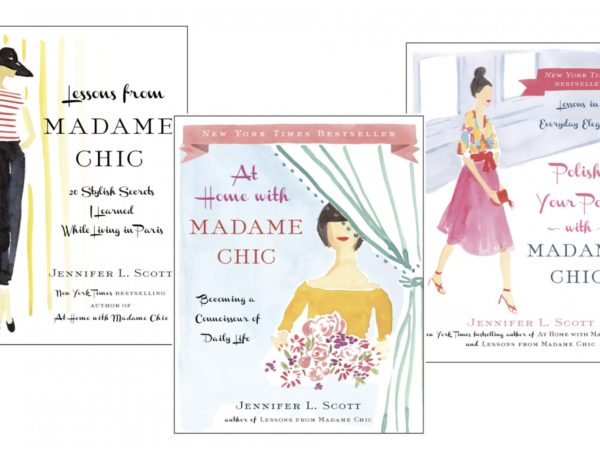My Dear Readers!
I recently picked up a novel by Lisa See, a writer who writes exclusively about China with most of her novels focusing on the experience of first and second generation Chinese immigrants in America. This time I found myself in possession of Lisa See’s Snow Flower and the Secret Fan. What I found in this particular novel was, however, not another tale related to the Chinese-American immigrant experience but instead, a historical drama and a close study of an ancient linguistic tradition that seems unique to China. The tradition I refer to here is Nu Shu, which translates literally to “women’s writing”.
Ms. See’s novel touches upon a great deal of tradition and historical practices. One of these is the Nu Shu script. Nu Shu is a script of writing used specifically by the women in Jiangyong County in the Hunan province of China. Now a dying script, it was used by women, who were confined indoors during feudal times, to communicate with one another. When read out loud, the script reads exactly the like local Chinese dialect of the area; however, in writing it differs from the standard Chinese characters which, in feudal and imperial times, were reserved for men only. What I find interesting here is that, considering French psychoanalytic feminism’s emphasis on the patriarchal bias in language and the possible existence of, and the need to define, a female language, here is a script that is completely unique to women. Silber, who has been working on Nu Shu since 1985 notes that “Out of the thousands of scripts that are gender-specific to men, here we have one that we know is gender-specific to women”.
The origins of Nu Shu are unknown; some say the script is related to the writings found on oracle bones. However, a local legend states that Nu Shu was invented by an imperial concubine who used the script to communicate her sorrows to her family outside the palace. It is nevertheless clear that Nu Shu originated at a time in Chinese history when women were generally confined indoors and education and literacy were thought to be the domains of men. These women, despite being isolated from society, invented a separate system of writing of writing that they used to communicate their feelings to the outside world. In fact, Silber says that “the emergence of this kind of phenomenon is consistent with a very sex-segregated society”.
Nu Shu was painted onto fans, woven into cloth and even embroidered on pieces of fabric. Karen Stollznow, who has also worked on the script, states that the script was not a part of formal education, which women were barred from, instead, it was passed from grandmothers and mothers to daughters through poetry, letters and books. Lauren Young however notes that the script is now vanishing perhaps due to the fact that women in China are no longer confined to their homes as they were in feudal times and as such, the script is no longer needed. In fact, the Nu Shu script was a reaction to the patriarchal structures that characterized the imperial eras and as such could be seen as a symbol of Chinese women’s strength and struggle for empowerment. The existence of the script itself may serve as a validation for French feminism’s notion that there is indeed the possibility of a women’s language as the idea of there being a women’s script corresponds with Luce Irigaray’s notion of the possibility of a womanspeak.
While the existence of this female-specific script opens up a multitude of linguistic possibilities, Lisa See in her novel Snow Flower and the Secret Fan, makes a study of the script in its historical context. The novel revolves around the relationship between the protagonist Lily and her friend Snow Flower. Here Ms. See refers to another of the women’s tradition in Jiangyong; that is, the tradition of creating socially sanctioned close friendship between two young girls. This relationship was seen as a relationship between two laotong meaning “old sames”. This relationship was seen as a close friendship between two young girls that was meant to last throughout their lives.
Ms. See’s novel follows the laotong relationship between Lily and Snow Flower and how they build their friendship upon small messages written in Nu Shu which they send to each other on pieces of embroidery and on a paper fan which they use to record important incidents in their relationship. The story focuses on the traditions of sisterhood within Jiangyong county, and how the women, who were confined to the inner chambers at the time, managed to build their own covert spaces of empowerment and freedom within the structures that confined them. The novel highlights the intelligence and resourcefulness of these women as they negotiate their unique social circumstances.
While the novel itself revolves around the themes of sisterhood, friendship and female oppression, what I find interesting in the text is the contrast it provides to modern day China where women are far more empowered and receive far greater opportunities than their counterparts during the feudal era.
However, what I find most intriguing about Ms. See’s novel is her descriptions of the traditions surrounding Nu Shu and the laotong and the emphasis she puts on the delicacy of such traditions. Lisa See points out that Nu Shu is delicate not simply in its form and the way it is written but also in the way it is interpreted. The script itself is extremely delicate to look at. While standard Chinese characters employ box like symbols, the Nu Shu script employs more delicate looking “cursive” characters. It is for this reason that this script was also often known as “mosquito writing”. As delicate as Nu Shu is to look at, the script is equally as delicate to interpret. The reason here is that unlike the standard Chinese script, Nu Shu is a syllabic system. That is, Nu Shu characters correspond to syllables and phonemes rather than to meanings. The script must then be interpreted according to context. It is on this particular phenomenon that Ms. See’s novel revolves. That is, the plot for Snow Flower and the Secret Fan revolves around relationships built and sustained through Nu Shu and the subsequent interpretation and misinterpretation of the script and its resulting effects.
Ms. See’s novel is indeed a book worth reading in that it explains in detail multiple ancient Chinese traditions that were initiated by and sustained by women rather than by men. Most of all it brings to light the particular tradition of the Nu Shu script which is evidently the only female-specific script to date. The script itself is disappearing since new marriage laws and socio-economic conditions in China have granted women with greater levels of freedom and the last true practitioners of Nu Shu are dying out. However, Nu Shu is now seen as part of China’s cultural heritage and attempts have been made to preserve it as such.
Much Love!






No Comments